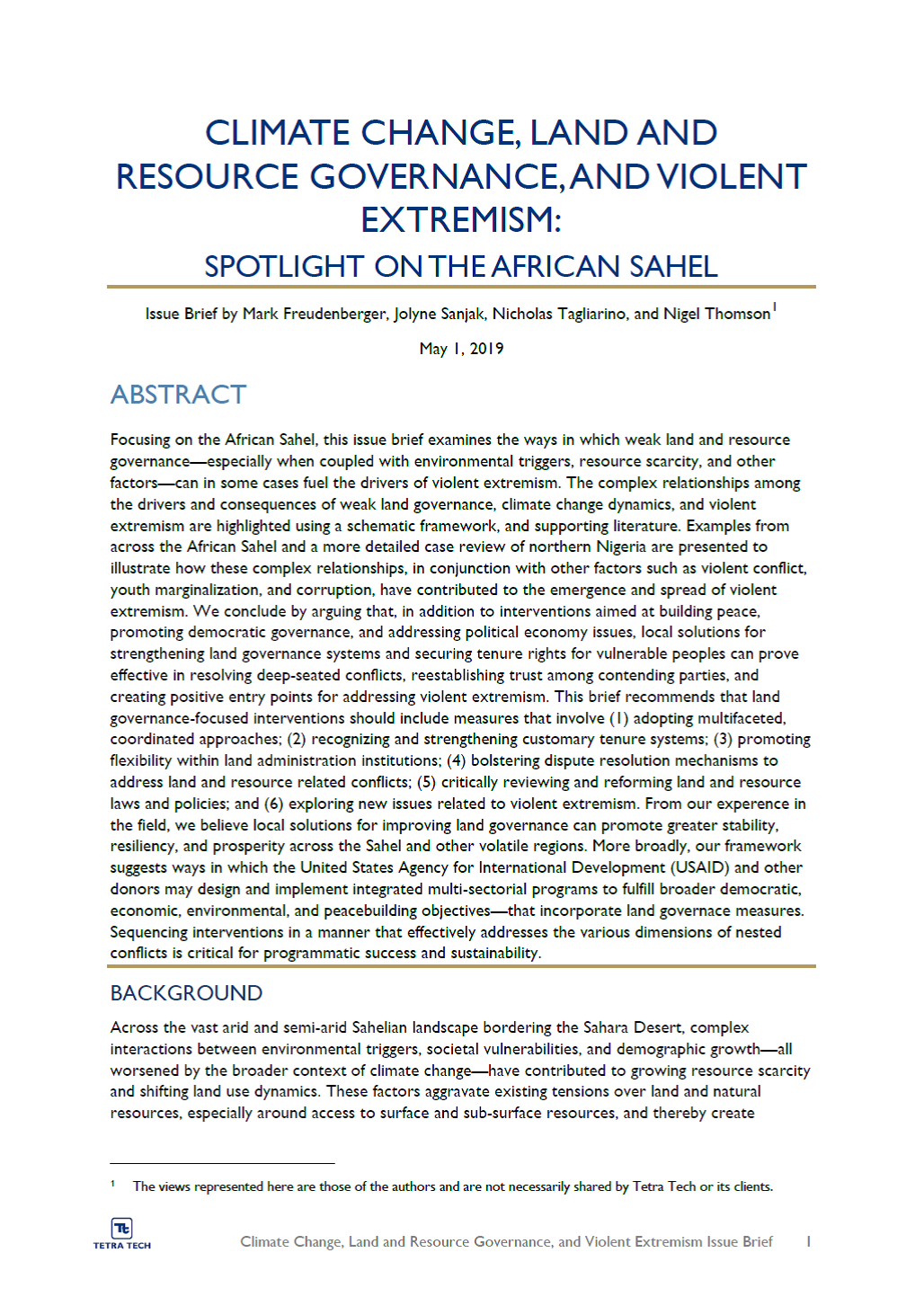Climate Change, Land and Resource Governance, and Violent Extremism: Spotlight on the African Sahel
Tetra Tech’s land tenure and property rights experts examine how weak land and resource governance can fuel drivers of violent extremism. With a focus on the African Sahel, this new issue brief finds this dynamic is especially prevalent when land and resource governance challenges are coupled with environmental disruptions, resource scarcity, or migration.


